The verdict: The 2017 Toyota Highlander Limited has lots of features for the money, but even with significant updates for the 2017 model year, this three-row SUV falls short of its competition because it doesn't drive as nicely or have as much space.
Versus the competition: In our recent 2017 Three-Row SUV Challenge, the 2017 Highlander finished last in a field of four. If it's going to compete with the newest three-row SUVs in its price range, the Highlander needs more: more space, more comfort and more technology.
Last fully redesigned for the 2014 model year, the Highlander received styling and drivetrain updates for 2017, including a new grille and an available V-6 engine that's more powerful and works with a new eight-speed automatic transmission. Our test model, an uplevel Limited trim with all-wheel drive, had the updated V-6 drivetrain and an as-tested price of $44,514, including a $940 destination charge.
Exterior & Styling
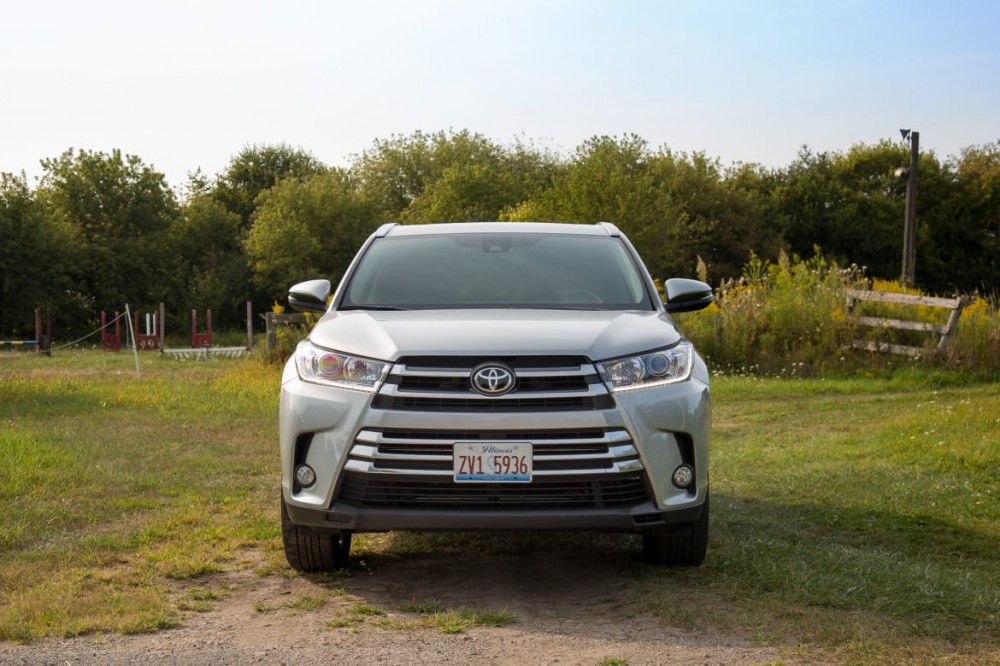
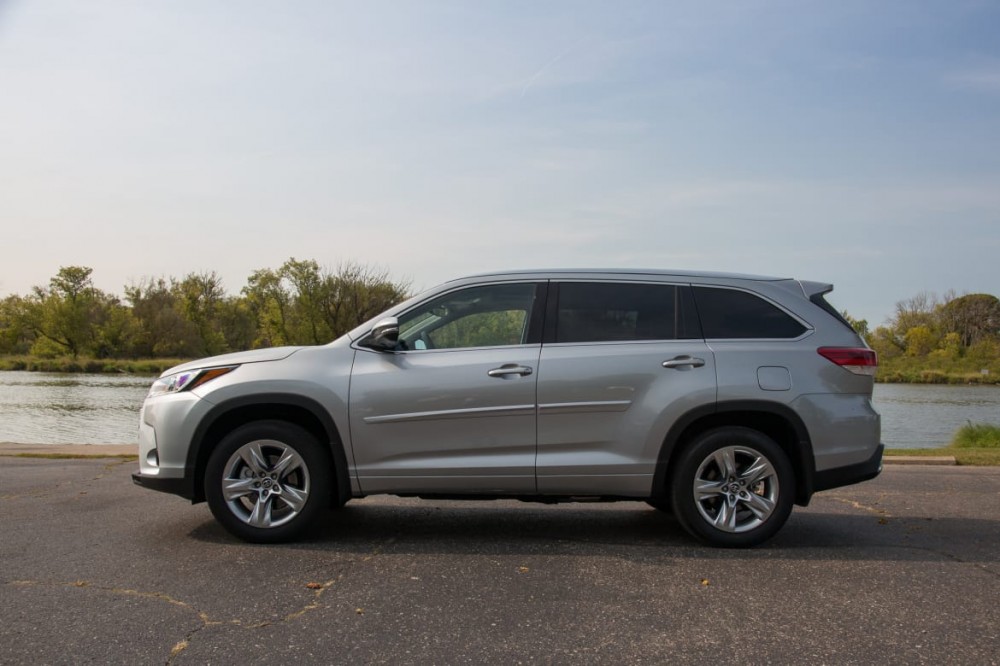
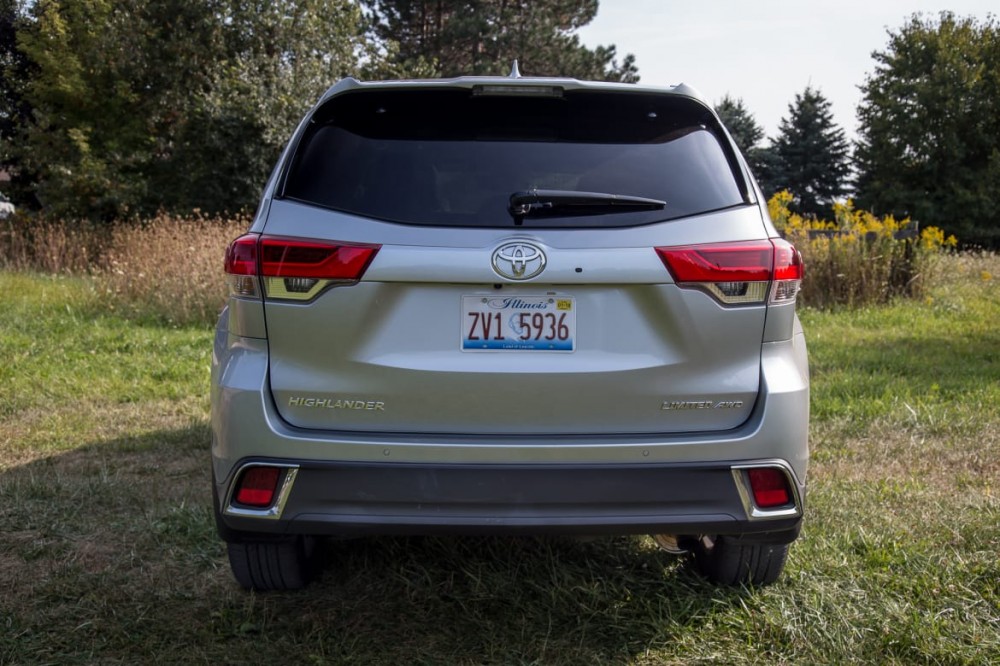
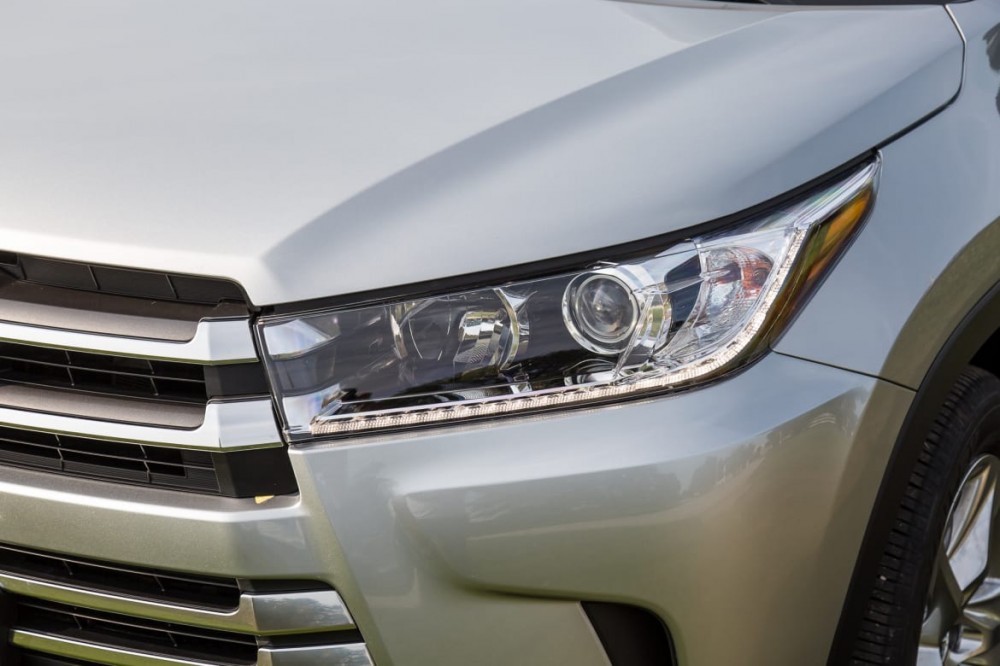
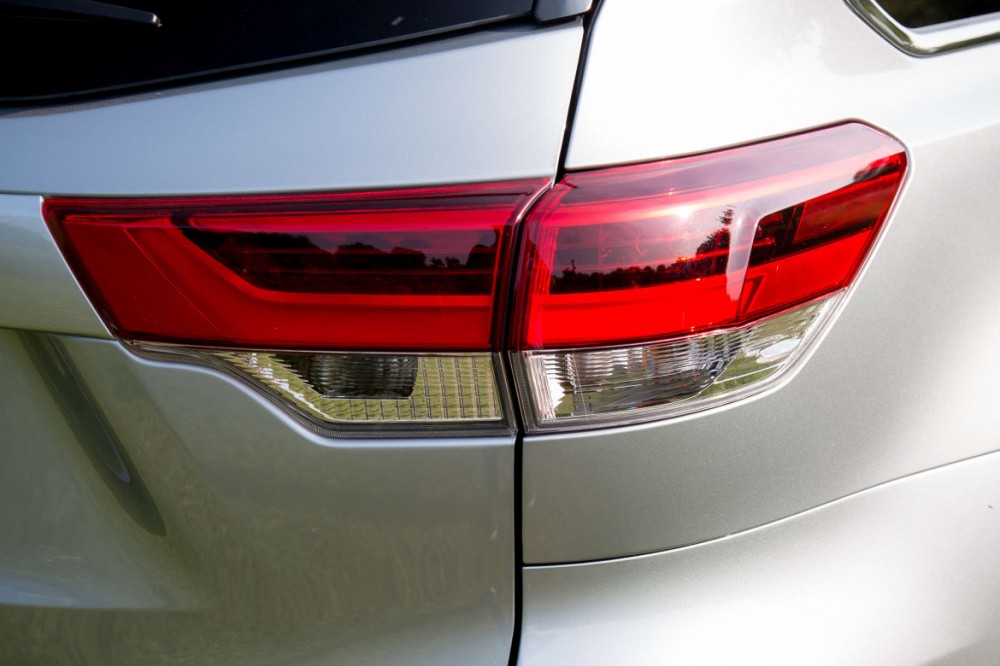
The Highlander's 2014 redesign gave the SUV a tougher look, and the changes for 2017 take that design theme even further. The updated front end has a huge trapezoid grille with chrome bars that replace the old snoutlike design, but the SUV's overall shape remains the same.
The Highlander's competitors in our Challenge — the redesigned 2018 Chevrolet Traverse, 2017 Honda Pilot and all-new 2018 Volkswagen Atlas — are all bigger on the outside, some significantly so, and the Toyota's smaller size can be felt in the cabin.
Limited trim design cues include smoked headlights, 19-inch chrome wheels and chrome roof rails.
How It Drives
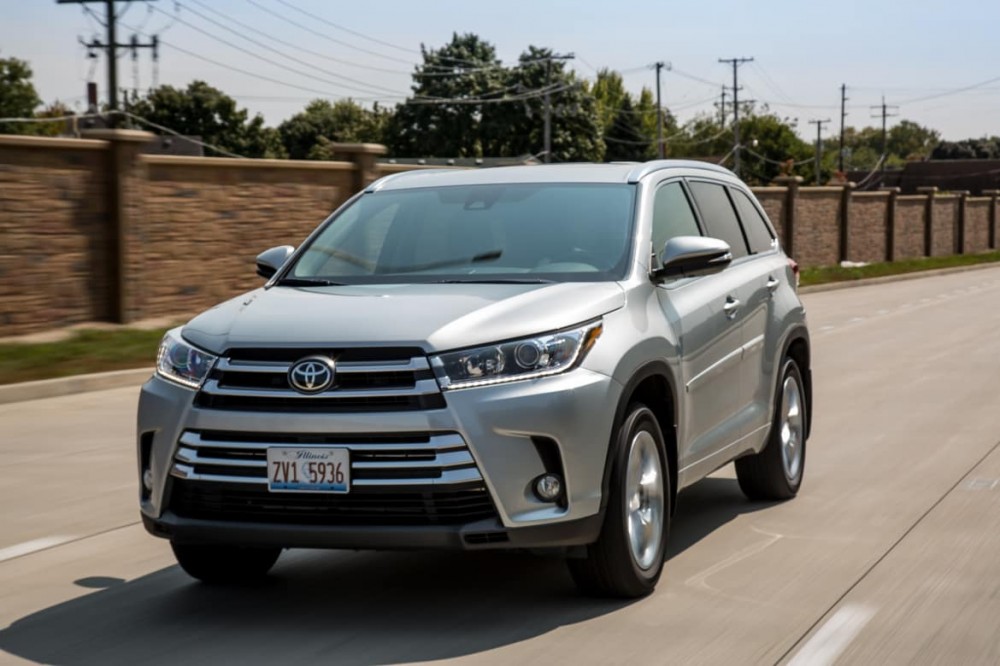
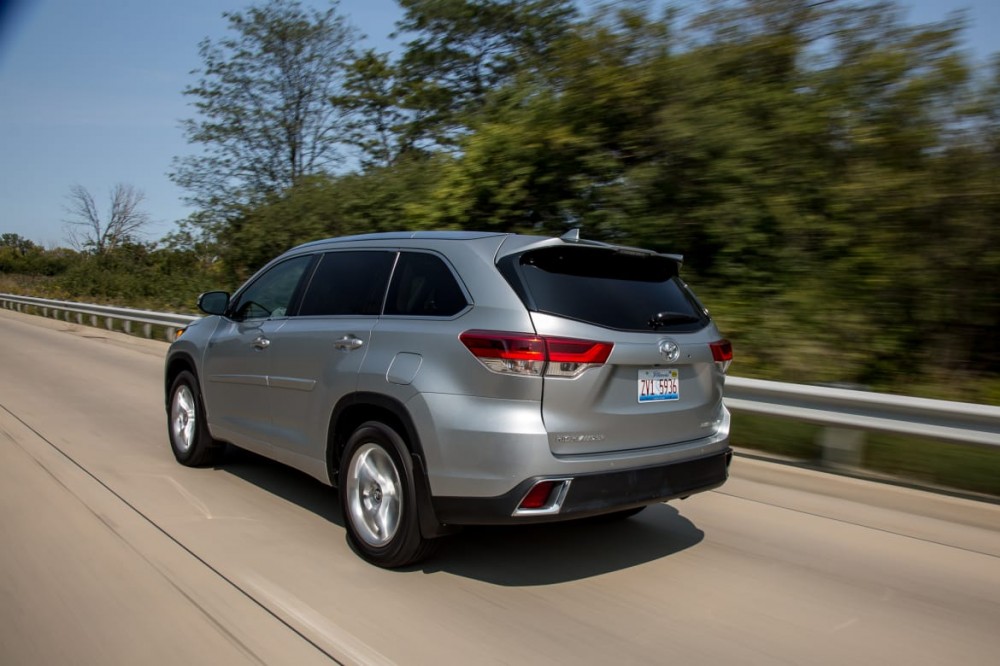
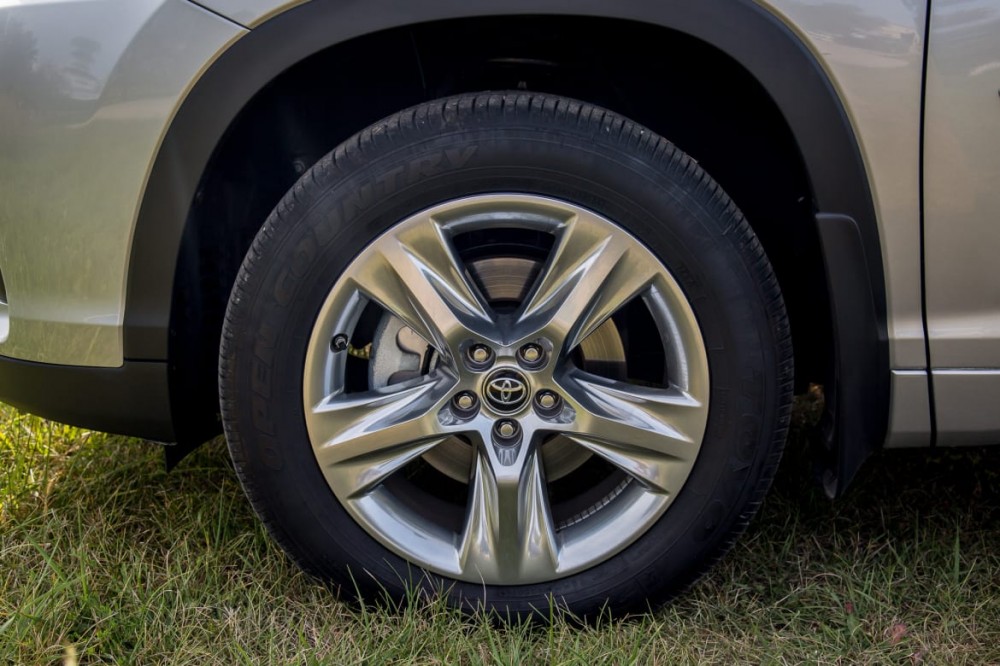
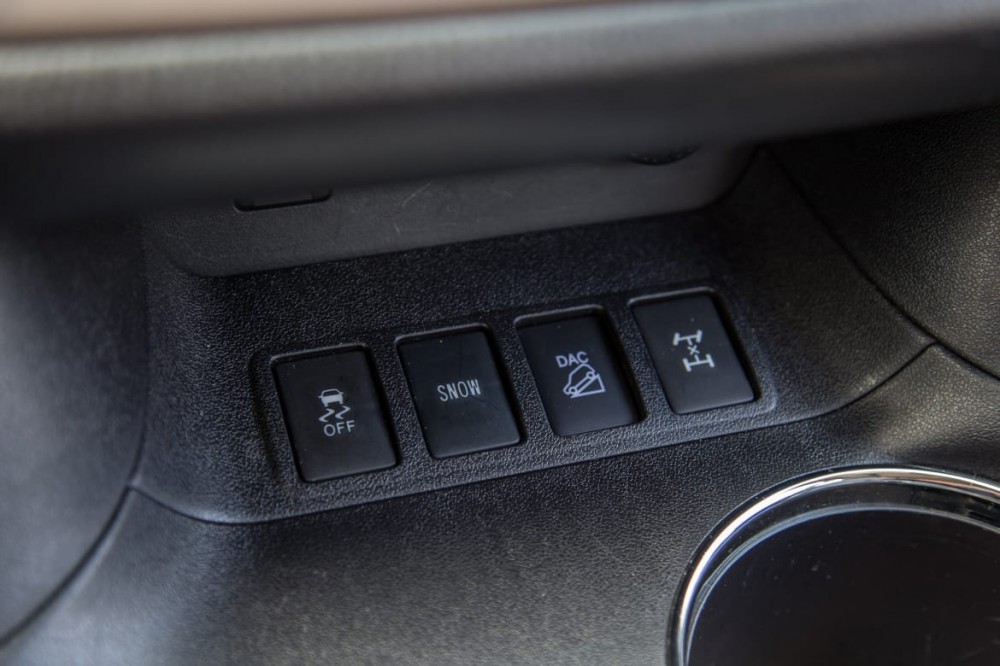
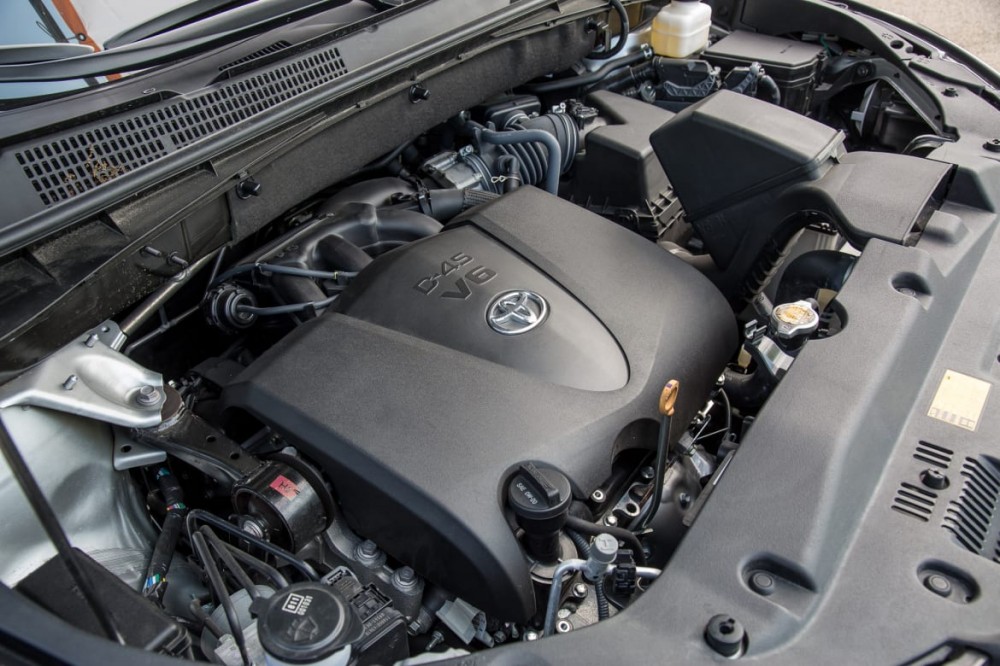
Many modern three-row SUVs drive like big cars, but the Highlander isn't one of them, even with drivetrain updates for 2017.
The Highlander has a firmer, busier ride than the Traverse, which benefits from a longer wheelbase that helps smooth out the ride, as well as comfort-oriented suspension tuning. The Highlander is also louder on the highway than the Chevrolet, with a persistent whistling sound at highway speeds. While the Traverse and Atlas have light, precise steering, the Highlander's is more vague — especially when starting a turn — and lacks feedback.
That said, the Highlander's suspension handles the SUV's mass well; it doesn't feel top-heavy or unstable through sweeping corners.
V-6-powered Highlanders get the new eight-speed automatic. I liked the V-6 drivetrain in the previous Highlander, which used a six-speed automatic. Even though the new transmission helps the SUV get better EPA-estimated gas mileage, the driving experience suffers.
The biggest problem with the new drivetrain is how sluggish the SUV feels when accelerating from a stop. It's very gradual — even when you press the gas pedal a good bit — like the transmission is in too high a gear. Only at midrange speeds does the drivetrain wake up and deliver stronger acceleration. Moving the console gear selector to the S position instead of Drive improves responsiveness a little.
Most trim levels with the V-6 have an auto stop-start system that shuts off the engine when you come to a stop, then restarts it smoothly when it's time to go again. The system includes a timer in the gauge cluster screen that keeps track of how long the engine has been off. I like how the stop-start system won't turn the engine off if you're pressing lightly on the brake pedal, as in stop-and-go traffic.
With its EPA-estimated 20/26/22 mpg city/highway/combined on regular gas, our all-wheel-drive Highlander Limited's gas mileage estimates were the best of the four V-6-powered SUVs in the Three-Row SUV Challenge, though the difference between best and worst combined mpg was just 3 mpg. The all-wheel-drive Pilot was a close second to the Highlander with its 19/26/22 mpg estimate, followed by the front-drive Traverse's 18/27/21 mpg rating. The all-wheel-drive Atlas, meanwhile, is rated 17/23/19 mpg.
The Inside
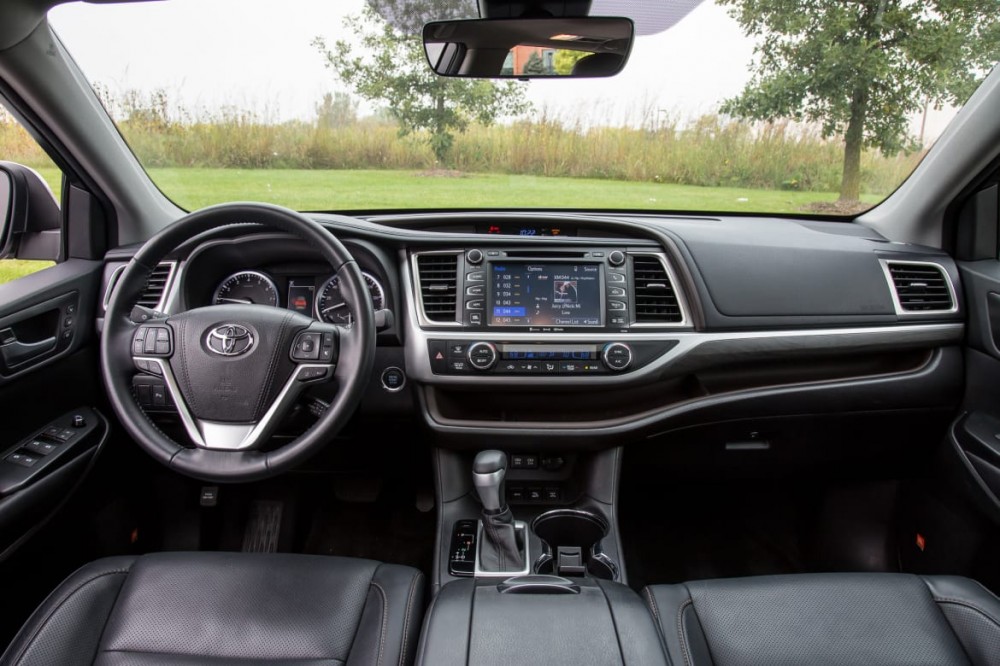
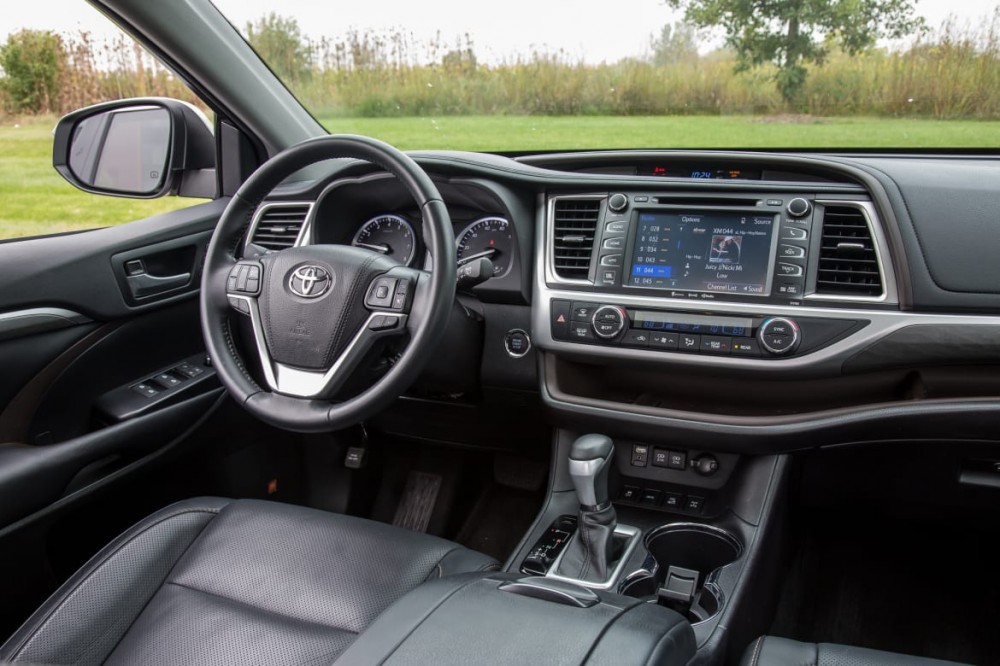
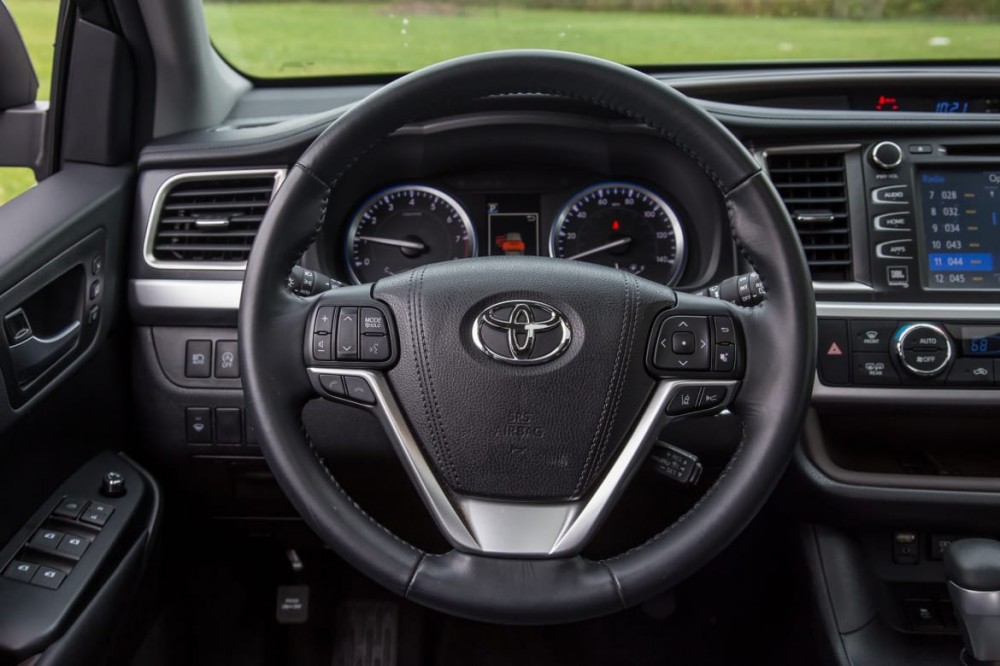
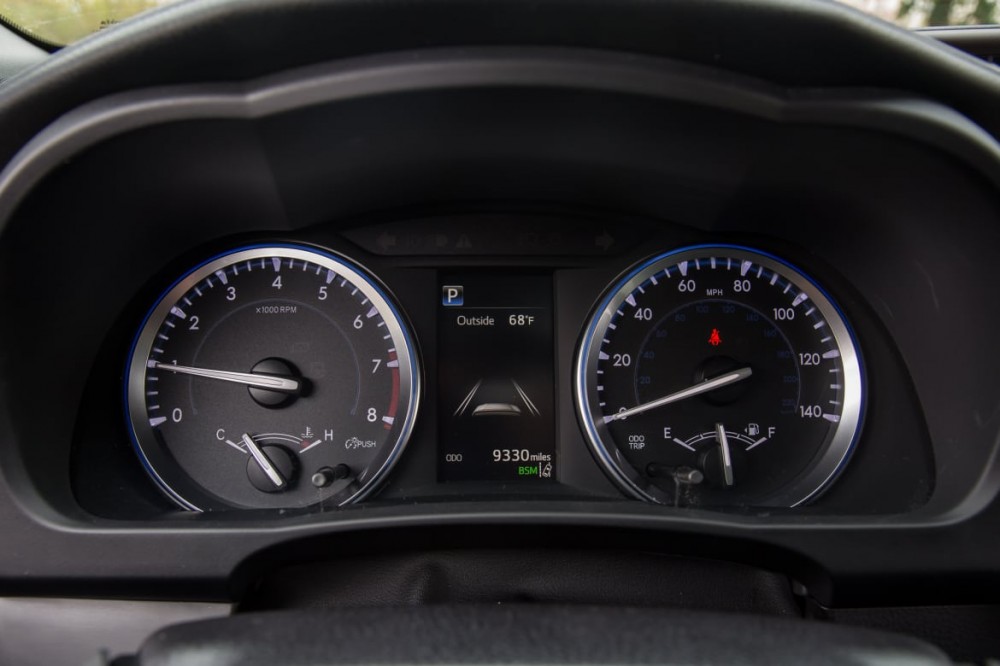
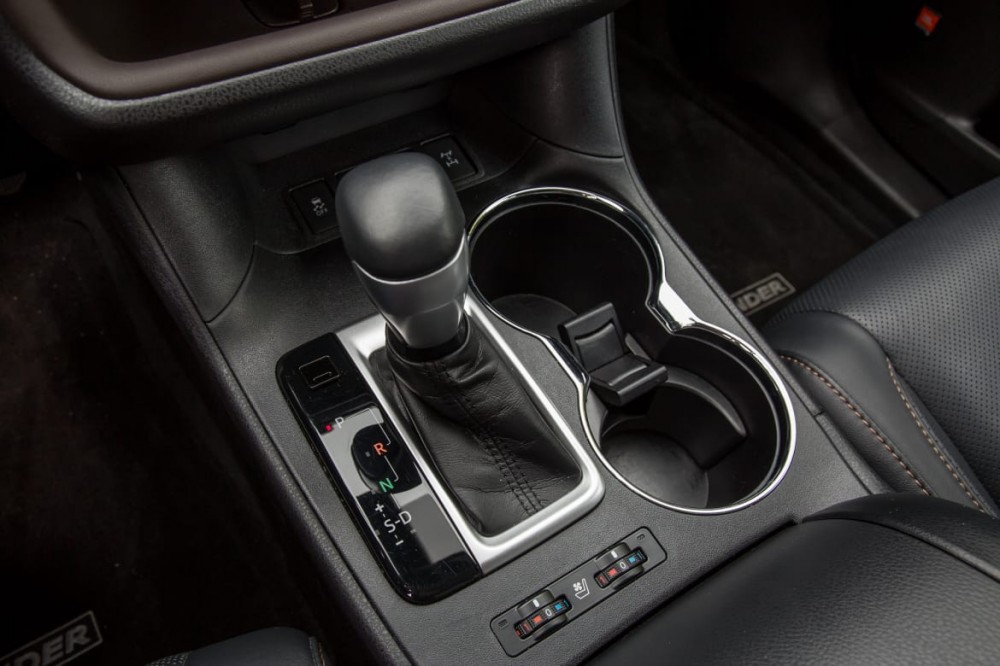
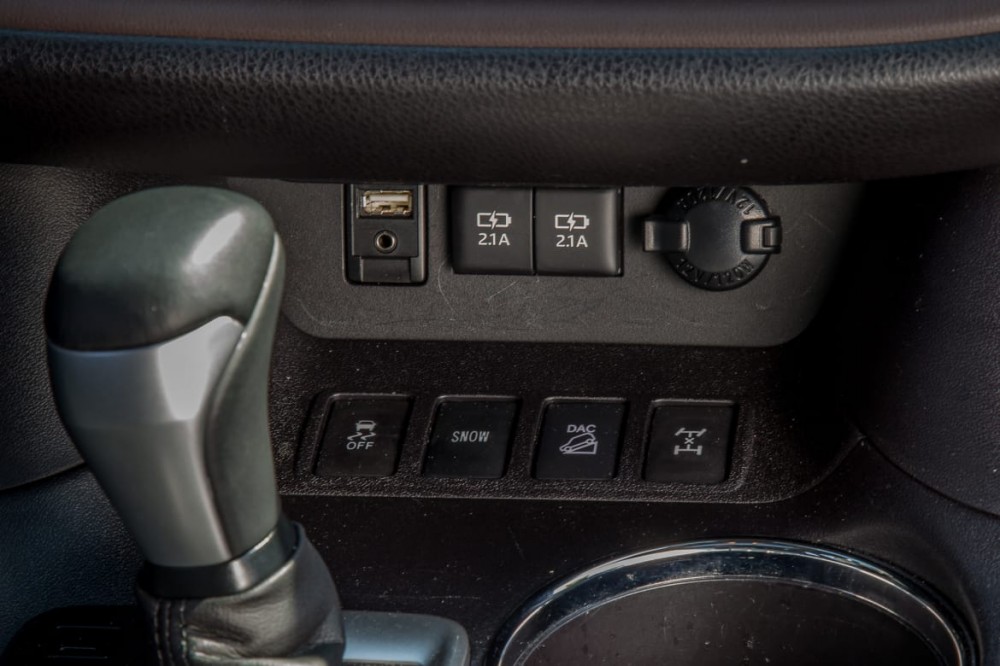
The Highlander's interior carries over much the same from the 2016 model. Even though materials are consistently good in the first and second rows, an area where some brands like to use lower-grade trim, the overall design looks dated in the face of newer competitors like the Traverse and Atlas.
The cabin does have some elements that set it apart, including a wide device tray at the bottom of the dashboard that also includes a cord organizer. It's one of those things with obvious appeal considering how many people tote smartphones, but you won't see something like it in other three-row SUVs. The storage bin between the front seats is among the largest in the class, with enough room to hold a laptop or purse.
The front bucket seats are comfortable and the Limited's driver's seat features an adjustable bottom cushion extension that lets you vary thigh support, which I appreciated. Of the four SUVs we tested, the Highlander was the only one with ventilated front seats in addition to the heated seats they all had.
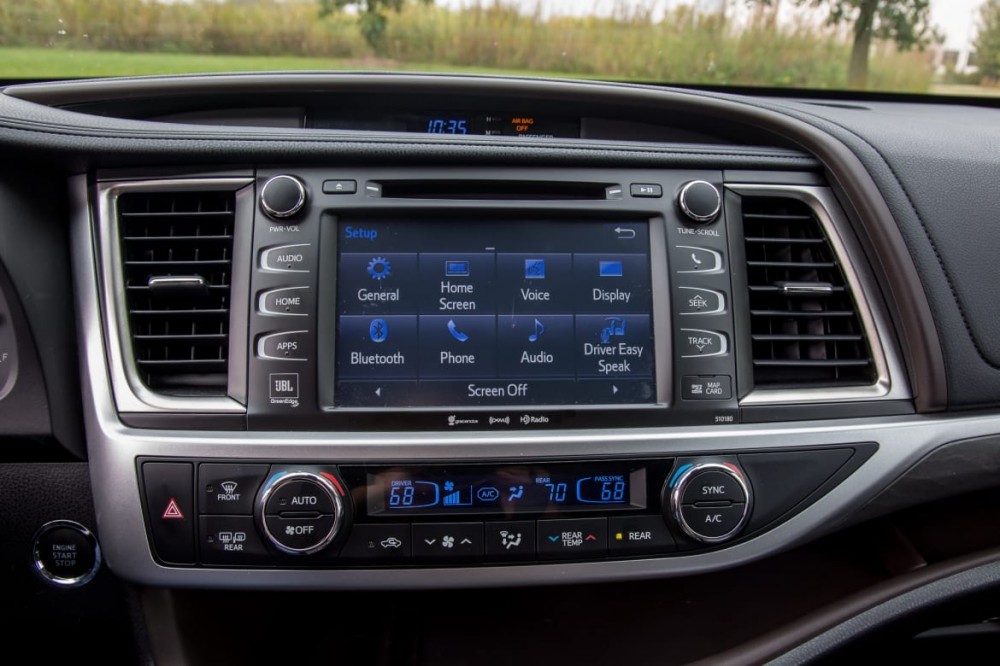
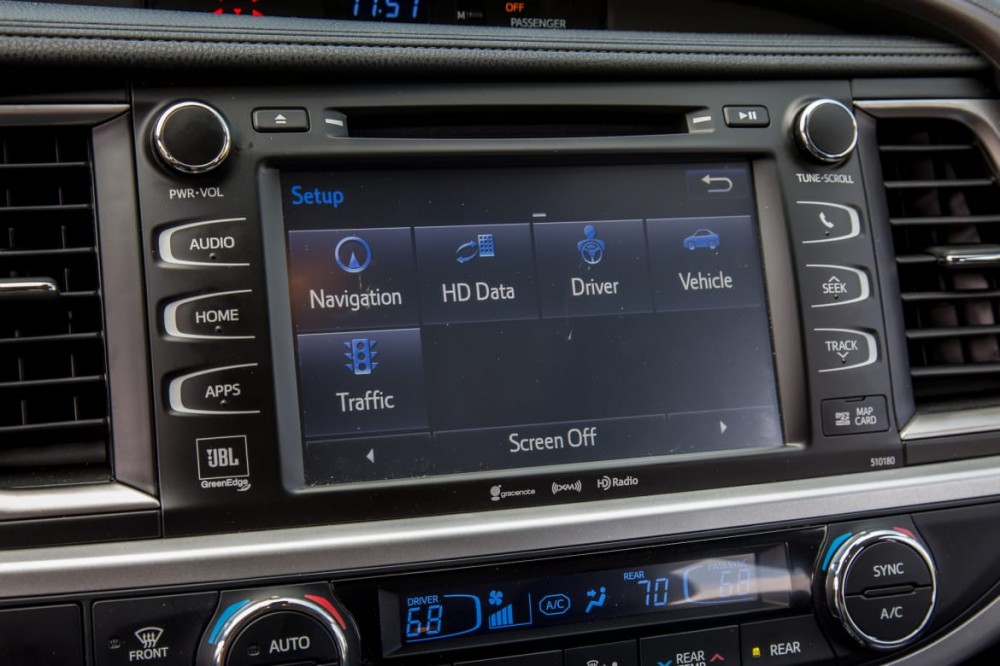
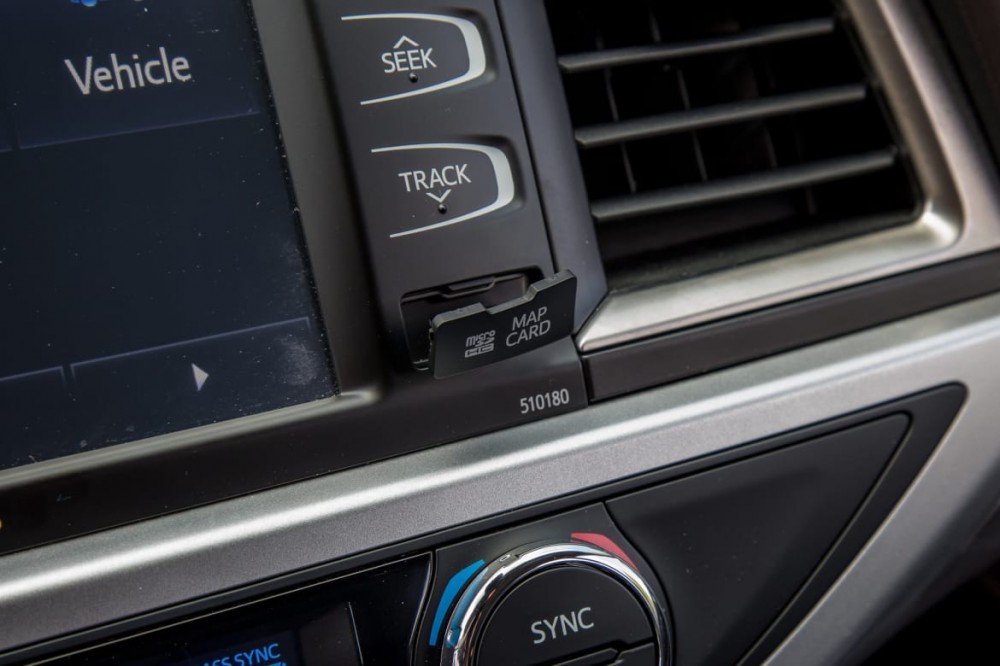
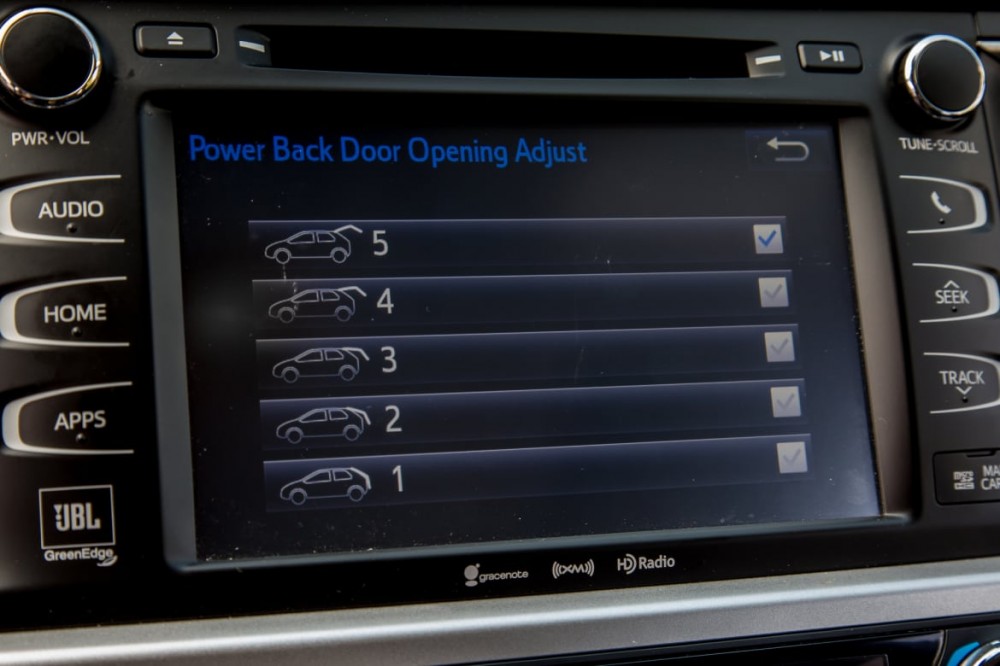
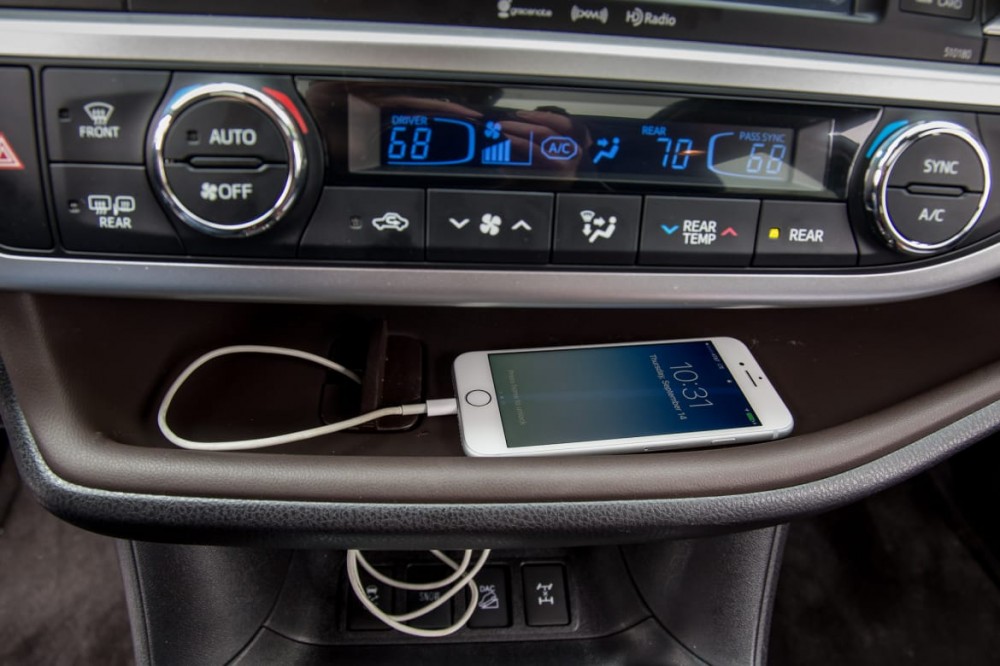
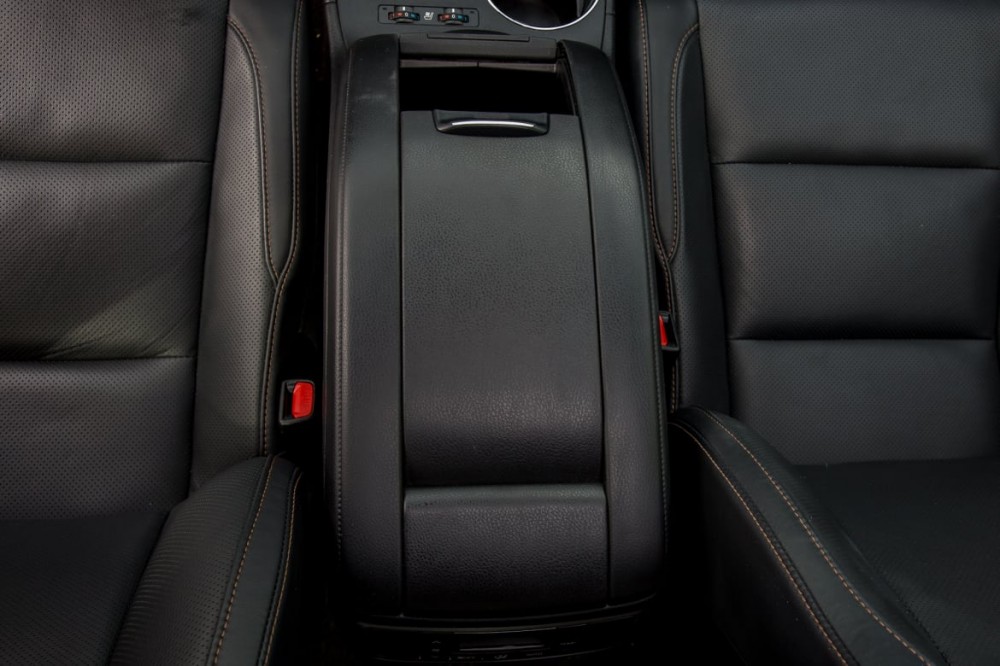
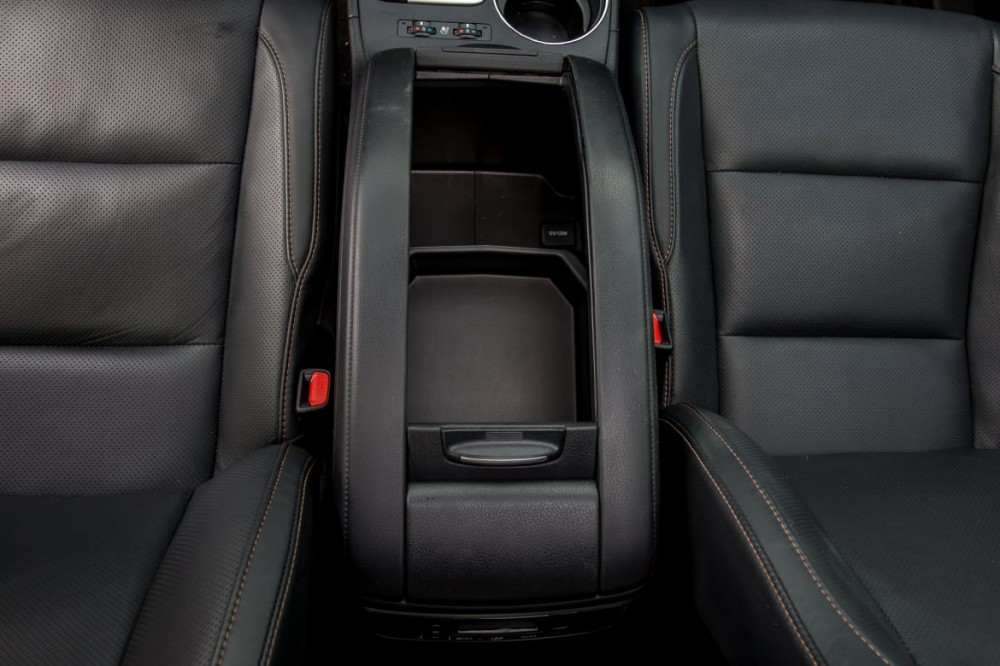
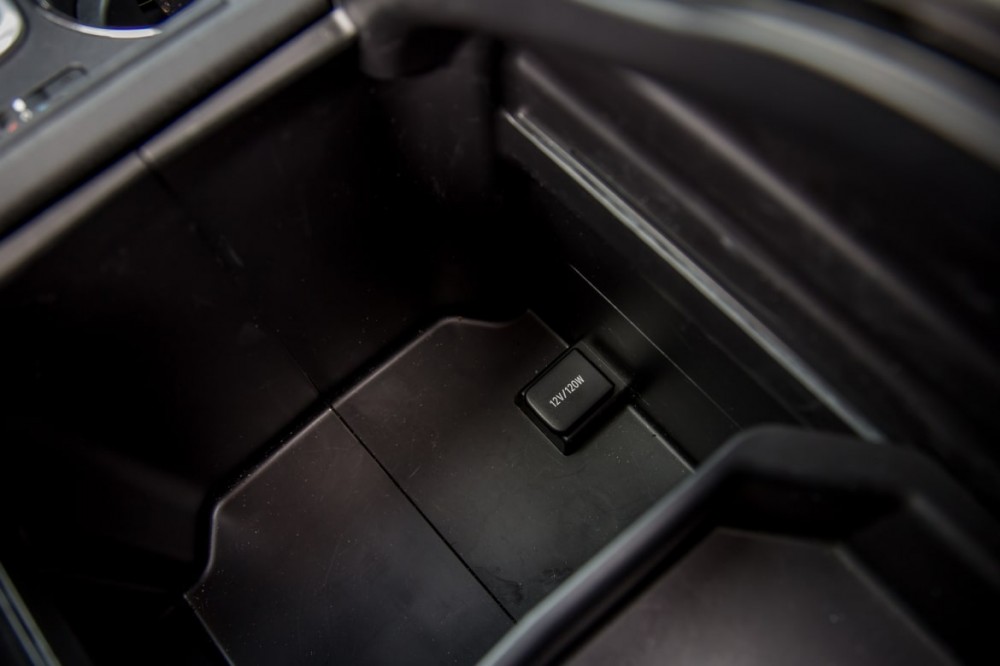
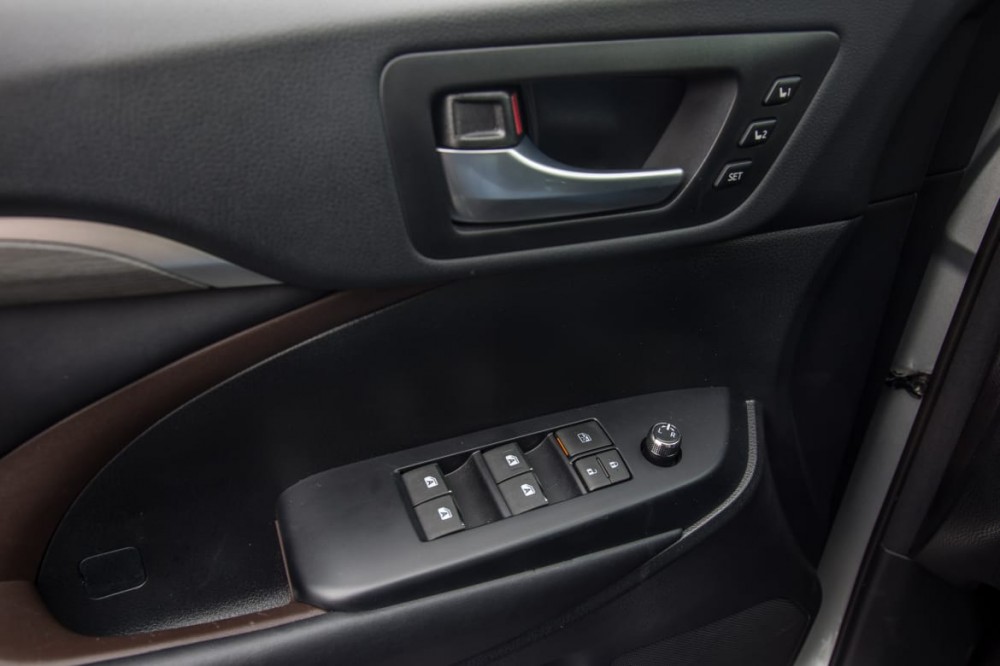
The Highlander is, however, missing two popular features common among its competitors: Apple CarPlay and Android Auto smartphone connectivity. The Limited's 8-inch touchscreen multimedia system does include navigation and Bluetooth streaming audio, and it was easy to pair my iPhone using Bluetooth. Though the system is easy to use overall, the touchscreen's graphics are basic compared with the Atlas' high-resolution screen.
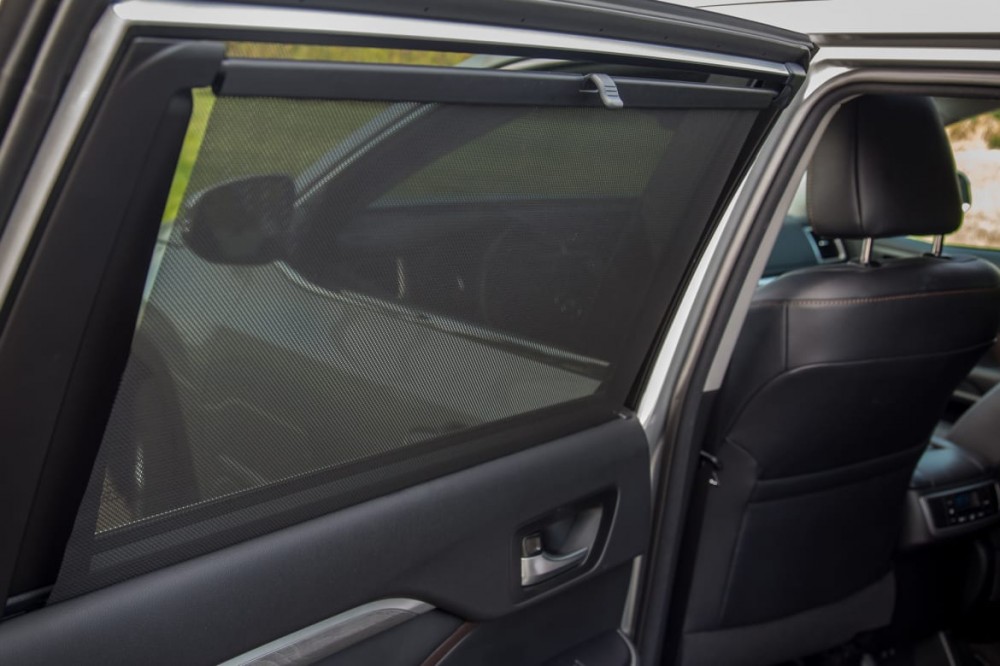
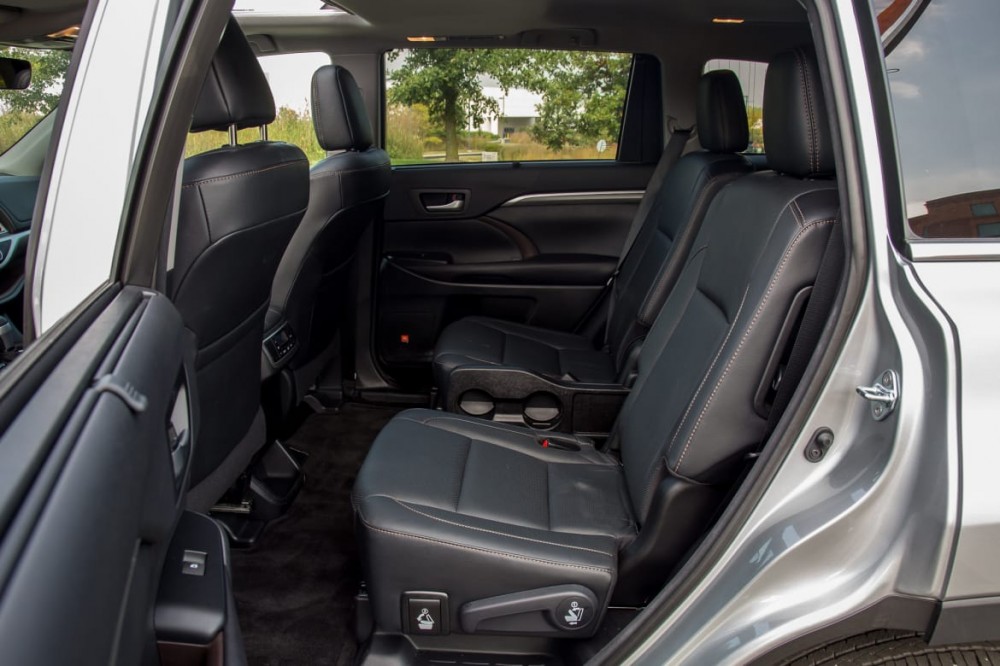
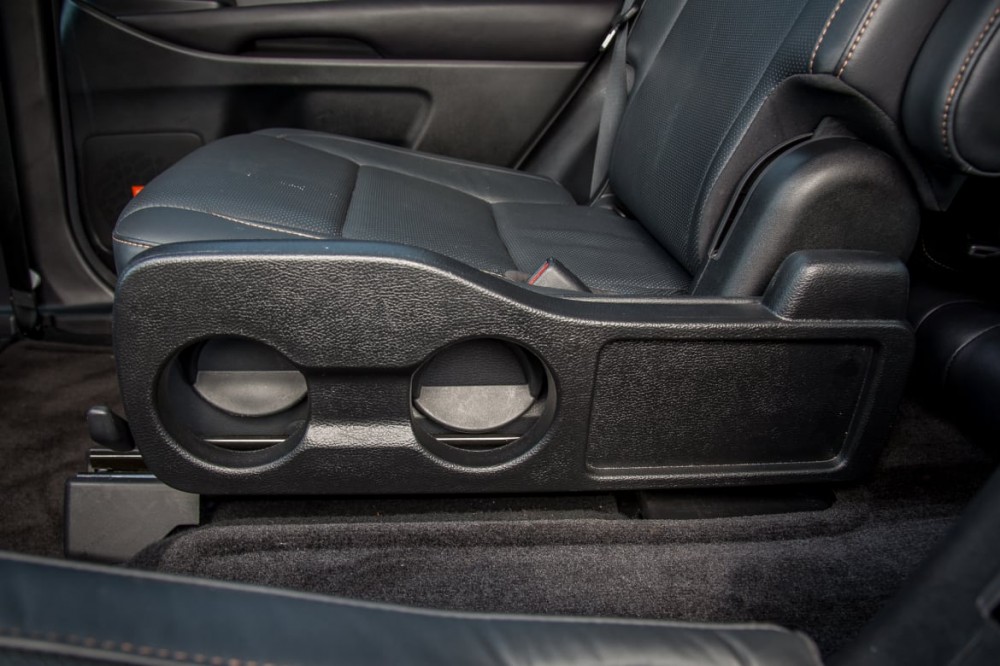
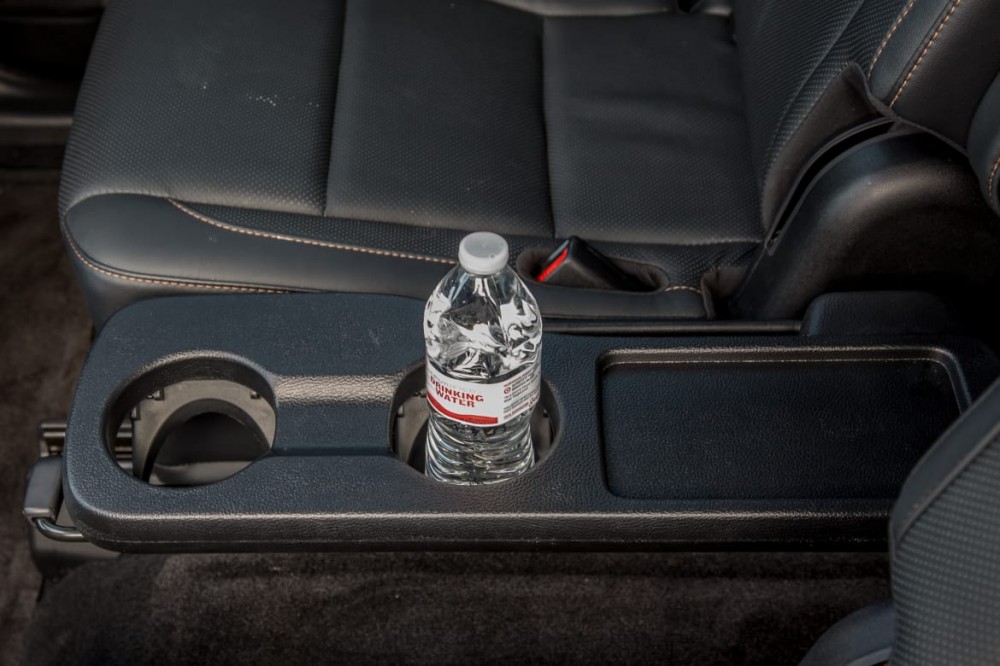
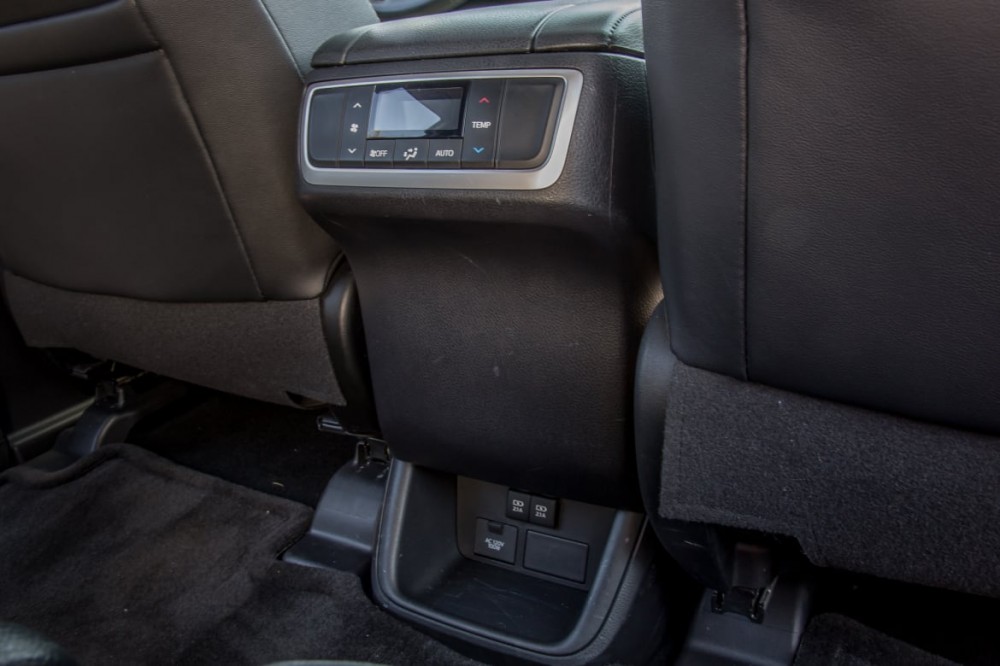
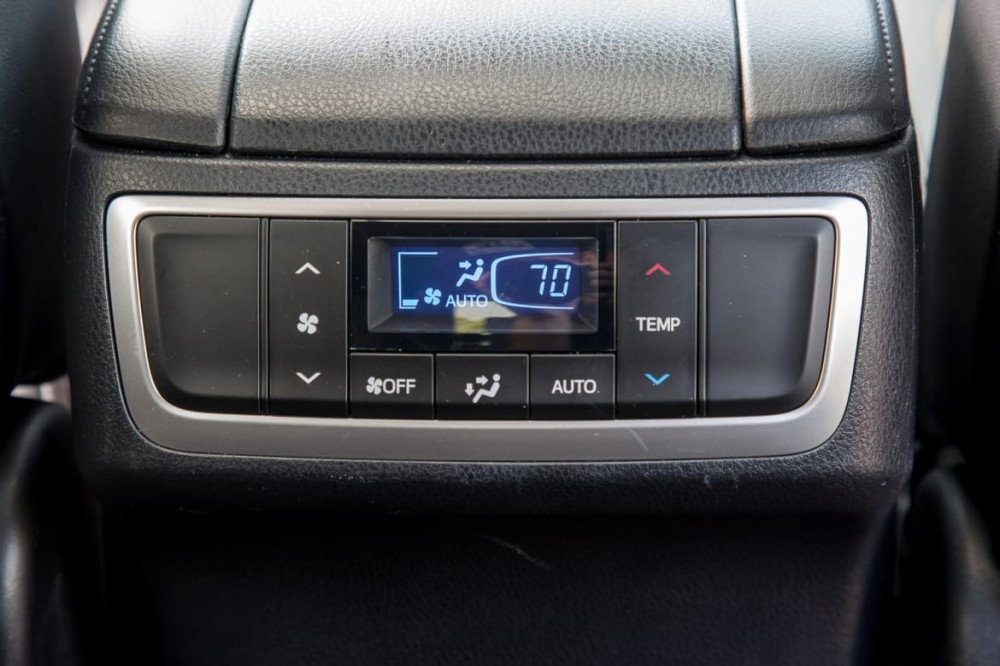
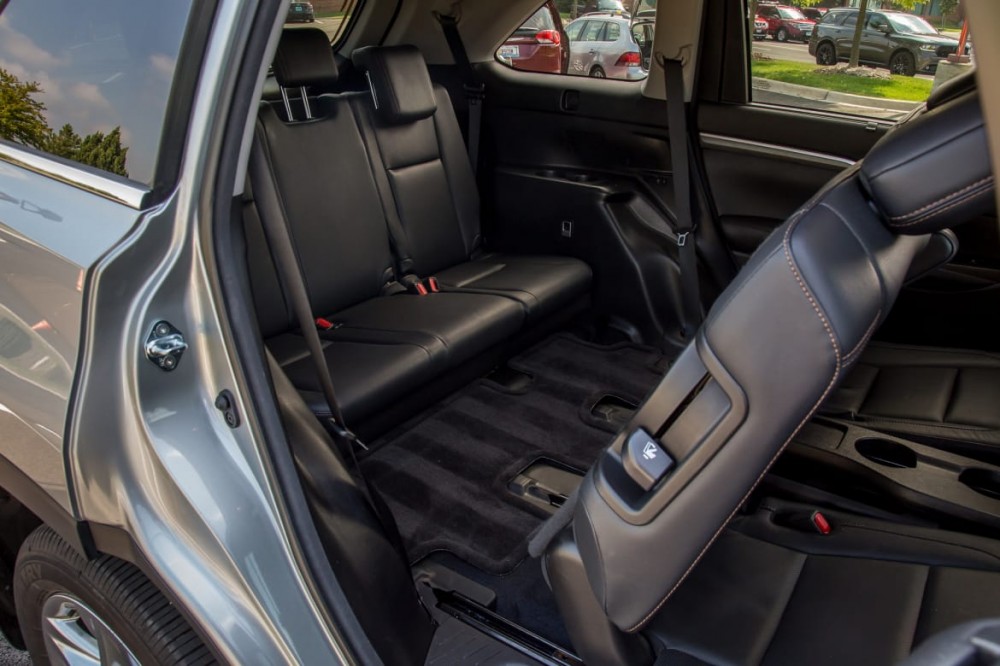
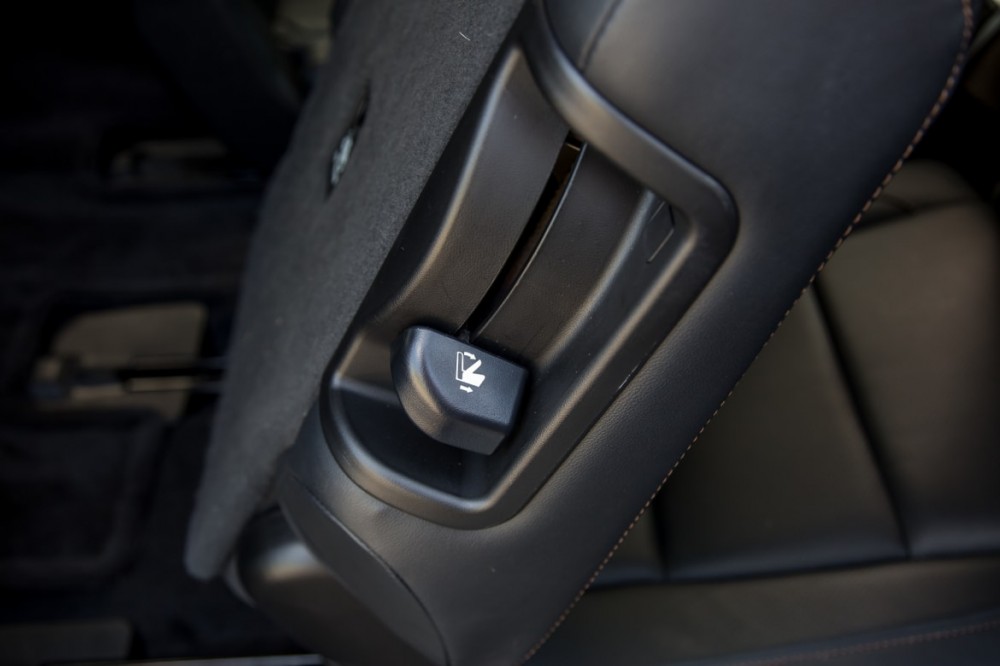
The optional second-row bucket seats slide forward and back quite a distance. Even though the seats themselves are comfortable, they're close to the floor, resulting in a less-than-ideal seating position.
It's a good thing there's so much second-row seat travel, because adults who dare sit in the third row will need as much space as possible for their legs. With its low seat cushion and knees-up position, the Highlander's third-row seat is considerably less comfortable than the Traverse's or Atlas', and its third-row comfort rating was worst of the four SUVs in the Challenge. The third row's backrest does recline quite a bit, however.
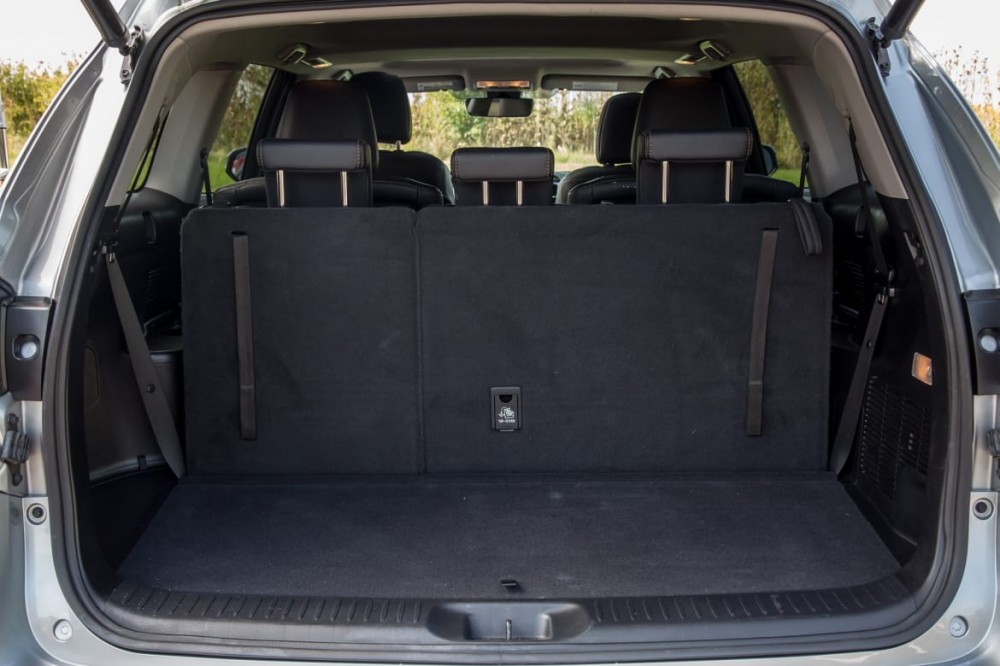
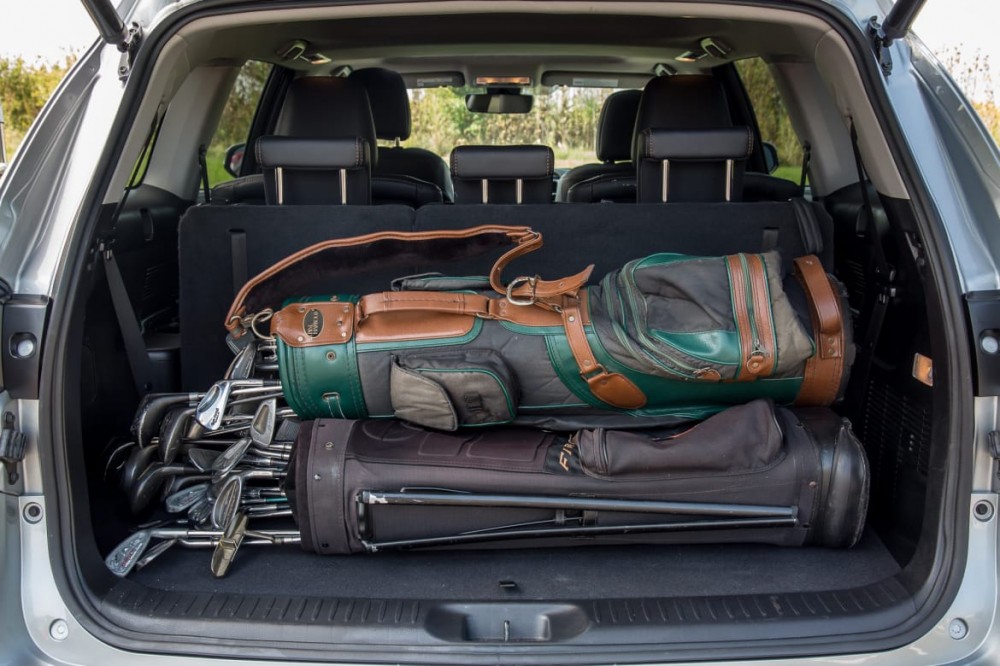
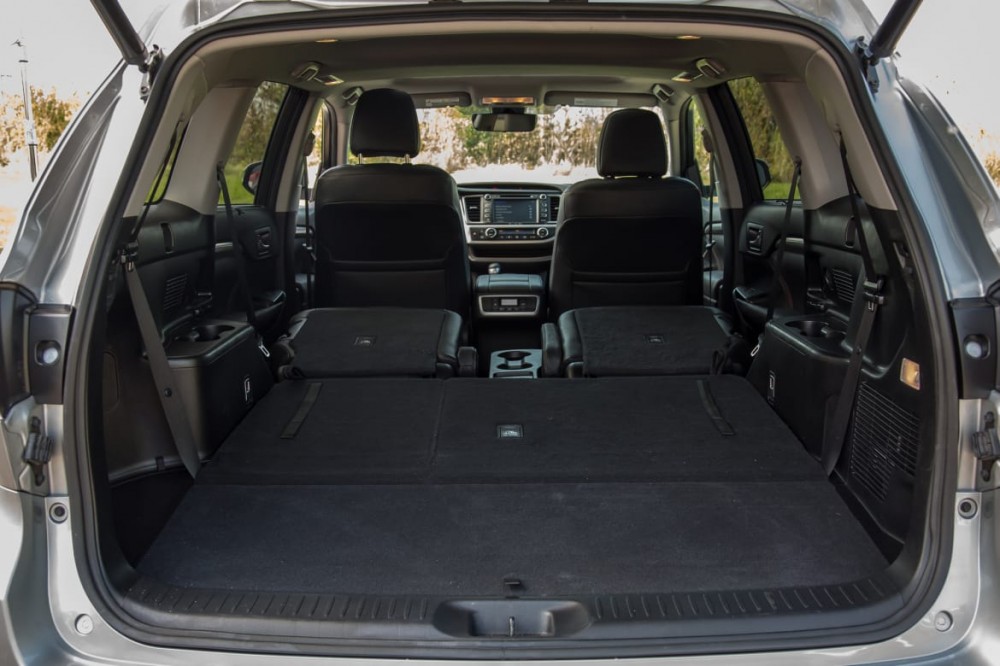
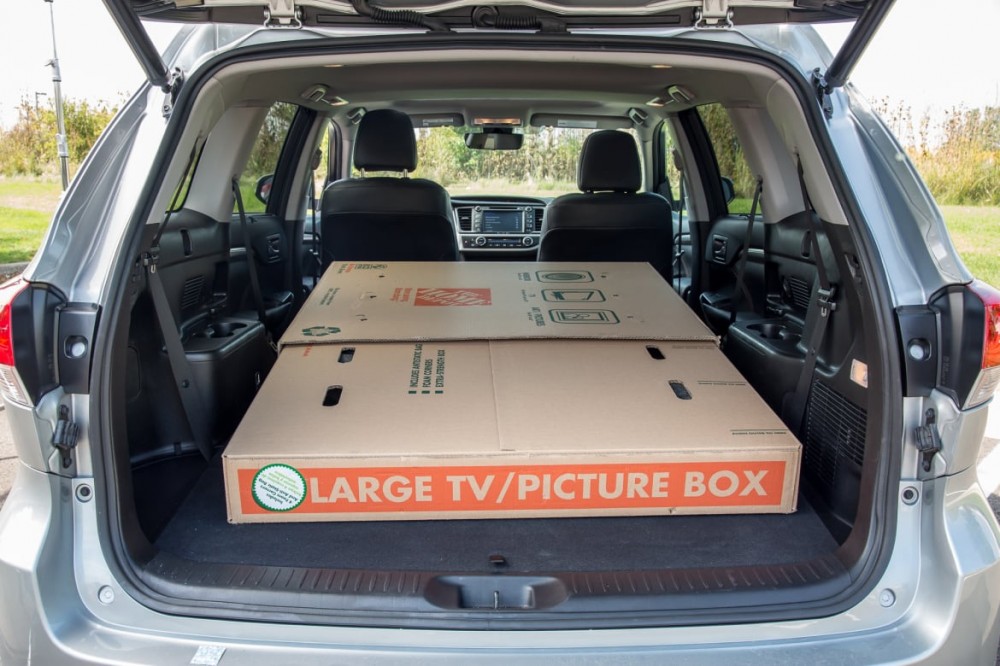
The Highlander's cargo storage was also judged worst. With just 13.8 cubic feet of cargo room behind the third row, it'd be hard to pack for a family trip if all three rows of seats are needed.
Safety
The 2017 Highlander received the highest rating possible in all Insurance Institute for Highway Safety crashworthiness tests, and its standard automatic emergency braking system also earned the highest rating. Its headlight performance was deemed acceptable, which is IIHS' second-best rating. Meanwhile, the National Highway Traffic Safety Administration awarded the SUV a five-star overall rating based on its crash-test performance and rollover resistance.
Other standard active safety features include lane departure warning, lane keep assist, adaptive cruise control and automatic high-beam headlights.
Value in Its Class
The mid-cycle updates to the 2017 Highlander might have been enough at a different time, but in the face of redesigned and all-new competitors that do a better job meeting family needs, it comes up short. Part of the reason is the new V-6 powertrain and its drivability issues, but this SUV is also hurt by characteristics that are hard or impossible to change without a full redesign — like its smallish cabin and cargo area.



Leave a Reply